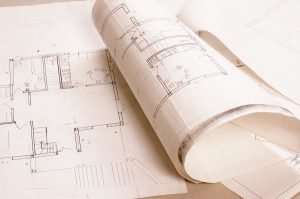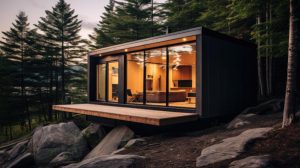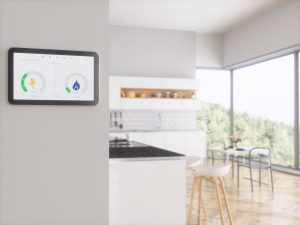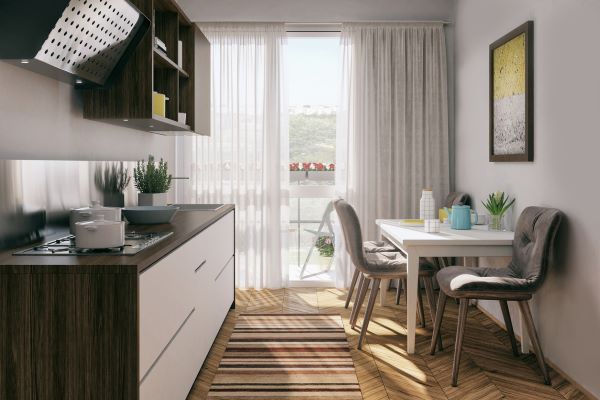
If you are like many home buyers today, you might be a little confused over the terms used to describe a “non-tradionally built” home. So let’s start right there with the term “traditional” home. When you see a home described in this way, it simply means that the home was built the “traditional” way that homes have historically been built. A home buyer works with a general contractor to design their new home, the contractor gets the permits, hires subcontractors, orders the materials, the materials are shipped to the home site where the construction BEGINS. (We’ve simplified it a bit here for this article, but those are the basic steps). This method is also referred to as “site-built,” stick-built,” or “conventional”. This is the way a majority of homes are built in the United States, but it is NOT the most efficient of effective way to build a home!
Unlike site-built homes, there are a full array of processes where the construction begins somewhere other than the home site. In other words, the construction occurs OFFSITE. So your home is either constructed primarily ONSITE (on the final site where your home is located) or OFFSITE (a nearby facility where the construction occurs in a controlled setting).
So that is the first distinction. If your home is built offsite, it can be constructed using a number of different processes – modular, manufactured, or panelized for example. Here are the key differences between these processes:
Modular
This means your home is being constructed in three dimensional boxes or “modules” at the factory. A modular home is built to the same local building codes (International Residential Code) as a stick-built home. The materials are shipped to the factory where construction of your home BEGINS in the form of larger components. These components (modules) are transported to your home site where your contractor will permanently attach them to each other and to the foundation. Once completed on your site, a modular home is virtually indistinguishable from a stick built home and meets all the same codes are requirements. It is important to note, there is no “modular building code” as homes built in this manner must meet the same local codes where the final home site is located, not where it is constructed.
Manufactured home
Unlike modular homes, a manufactured home is one that is built to the federal Housing and Urban Development (HUD) Code. This is a national code that preempts local codes. Homes built to the HUD code are sometimes referred to as “mobile homes” or by the slang name “trailers.” These homes are designed and constructed to meet a niche of buyers seeking “affordable housing” options. As such, a manufactured home generally costs much less than a modular or stick built home. WORD of CAUTION: If you want a modular home and facing budget concerns, be aware that some builders may steer you towards a manufactured home as a lower cost solution. There are several companies that built both modular and manufactured homes.
Panelized
Similar to modular in that these homes are built to the local IRC code. But unlike modular, a panelized home is built wall by wall and shipped to the site, instead of in boxes or modules. Transportation costs are often more favorable, but this method requires more on site work.
Prefab
Prefab is a marketing or slang term, short for the word “prefabricated.” This simply mean that the home or parts of it were prefabricated before they arrived at the site. Roof trusses are a great example of prefabrication in homes. Many people in the industry, particularly in the west, have embraced the term “prefab” in an effort to move away from other terms they deem to be less desirable.
Summary
So if you are still confused remember this one key point to ask your contractor –what code will my home be built to? If the answer is something other than your local building code (typically a version of the International Residential Code), chances are you are not getting a modular home.
Learn More From MHBA
How Does Modular Construction Reduce Material Waste?
Modular construction lends itself to better recycling practices. Modular homebuilders can develop best practices for recycling and reusing materials, cutting down on waste.
New Building Code Adoptions: Improved Building Safety or Backdoor Unfunded Mandates?
Communication is key when new building codes are adopted. This keeps code adoption consistent across numerous jurisdictions.
7 Myths About Modular Homes
If you are considering building a home, modular homes are a reasonable choice. However, there are a number of myths and misconceptions that can make you less inclined to buy one.
Here are some of the most common myths about modular homes:
Learn More About the Benefits of Modular Homes
Pros and Cons of Modular Homes
The pros of modular homes include lower costs over traditional construction methods, better quality, improved construction speed, and better resilience while the cons consist of a bit more complicated financing process, lack of customization, and the social stigma that is the consequence of the low-quality of modular homes in the past. In this article, we…
More Than Ever, The Modular Future is Now
In 2007, the United States faced a housing crisis that caused the Great Recession and had economic ramifications for years. Some people called it the subprime mortgage crisis. One cause of the crisis is that lenders gave loans to potential homeowners even if the buyers couldn’t afford them.
Is Modular Housing the Solution to the Housing Crisis?
In 2007, the United States faced a housing crisis that caused the Great Recession and had economic ramifications for years. Some people called it the subprime mortgage crisis. One cause of the crisis is that lenders gave loans to potential homeowners even if the buyers couldn’t afford them.
Creating Affordable Energy-Efficient Housing Through Modular Building
It feels like everyone — consumers and contractors alike — is looking for ways to improve their homes’ energy efficiency. Thanks to climate change, dangerously hot summers and brutally cold winters make it more challenging to keep structure interiors comfortable.
Ways a Modular Home Can Save You Money
Are modular homes cheaper than site built homes? Why are modular homes cheaper than site built homes?
What’s in a Name? Modular, Manufactured, Prefab, Offsite?
What is the difference between modular homes, manufactured homes, prefab homes, and homes built offsite?
Latest Modular Design Trends
What are the latest modular design trends? What trends are on the horizon?
Why Tiny Houses are NOT Modular Homes…Yet.
Are tiny homes the same thing as modular homes? What is the difference in a tiny home and a modular home?
